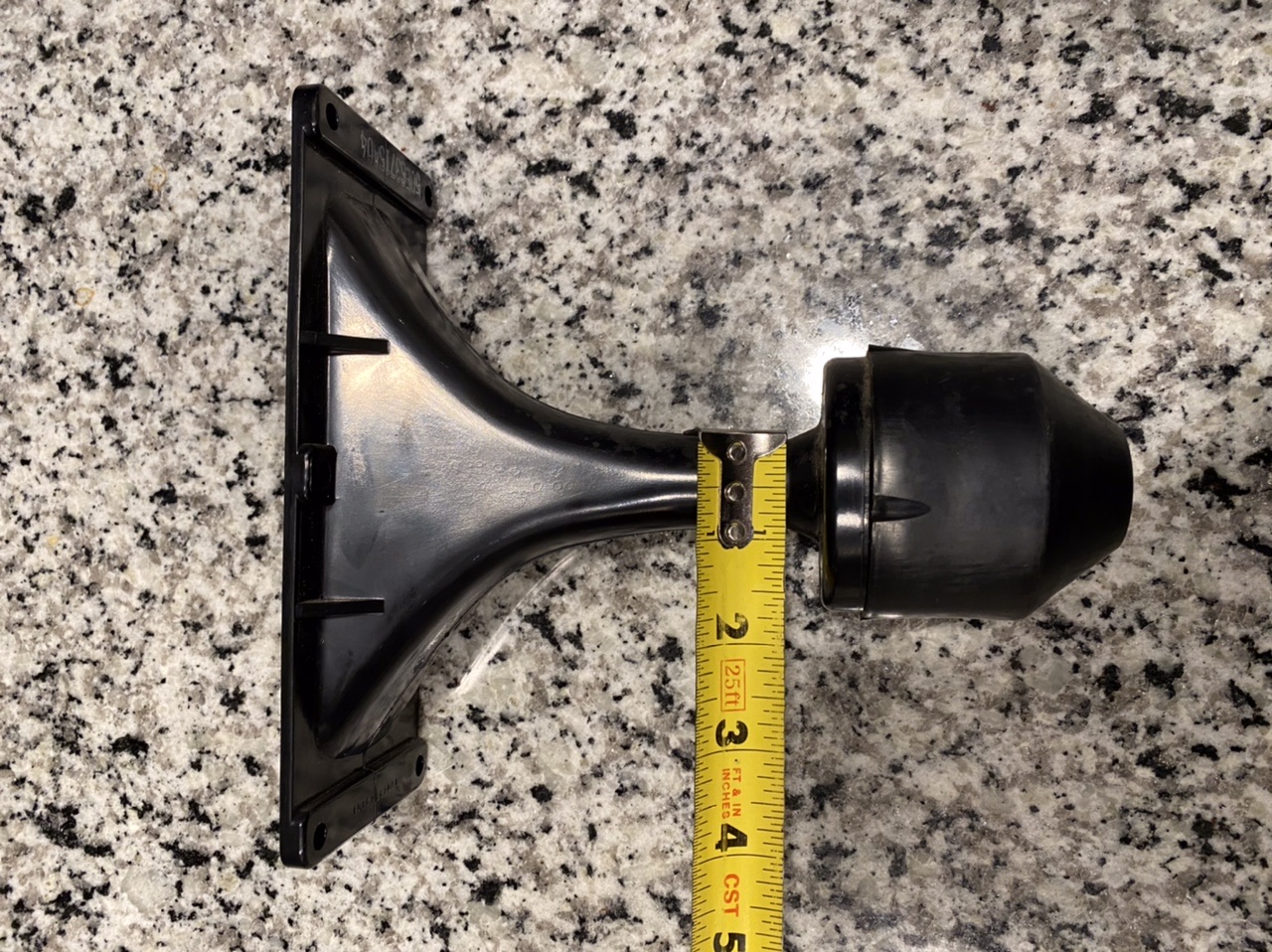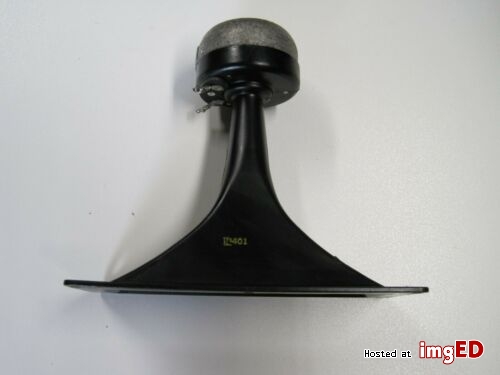all speculation and conjecture at this point....an ohm meter reading would tell us if a cap is inline.
It's the speculation and conjecture that is the fun part! 😀
No doubt Mike will put us out of our misery soon.
No doubt Mike will put us out of our misery soon.
Yes, of course.
We are grasping at straws here, lacking complete data.
In any case, dynamic with internal cap or Piezo (which IS a cap) that horn seems to be designed to be straight connected with rest of soeakers, so the next useful question remains: does it work?
If speakers worked before, they "should" work today.
I´d use system basically as is, with minimal man-hour and $$$ investment, only thing it clearly needs is some acoustic batting and some housing protecting midrange speaker from woofer backpressure.
Updating 33uF capacitor of course, an electrolytic bipolar one should do (at least for the next 20 years or so), doubt there is muchb transparency-depth_of_field-granularity-whatever is to be recovered from such old workhorses.
But using them as-is would be an interesting window into the past.
I bet any modern amp, even a chipamp, will be miles ahead of what was there originally and *that* will be the main improvement.
We are grasping at straws here, lacking complete data.
In any case, dynamic with internal cap or Piezo (which IS a cap) that horn seems to be designed to be straight connected with rest of soeakers, so the next useful question remains: does it work?
If speakers worked before, they "should" work today.
I´d use system basically as is, with minimal man-hour and $$$ investment, only thing it clearly needs is some acoustic batting and some housing protecting midrange speaker from woofer backpressure.
Updating 33uF capacitor of course, an electrolytic bipolar one should do (at least for the next 20 years or so), doubt there is muchb transparency-depth_of_field-granularity-whatever is to be recovered from such old workhorses.
But using them as-is would be an interesting window into the past.
I bet any modern amp, even a chipamp, will be miles ahead of what was there originally and *that* will be the main improvement.
that's why early on i suggested a three way active system. he could use his Dynaco to power the woofers and a few chipamps for the mid's and tweet's. if he goes with a x-over that has time alignment capabilities i say done deal.
being that this console was not a sealed affair to begin with would isolating the mid be necessary?
i agree batting/damping would be beneficial.
being that this console was not a sealed affair to begin with would isolating the mid be necessary?
i agree batting/damping would be beneficial.
I was just about to say that, if the console remains open-backed, the mid will not experience back pressure from the woofer.
the original backing is perforated hardboard.
an aperiodic or resistive vent approach would likely be best.
an aperiodic or resistive vent approach would likely be best.
JMF also mentioned that earlier, Mike.
By lining the perforated hardboard back internally with the likes of black Melton cloth Melton (cloth - Wikipedia), you can get close to the damped aperiodic loading to which both he and turk refer.
This type of loading helps improve the bass response while relieving the pressure that would build up in a totally sealed enclosure.
(Don't shoot me down for the explanation. guys, I'm keeping it simple for Mike's sake!)
If you decide to try this, it may be wise to box in the mid.
By lining the perforated hardboard back internally with the likes of black Melton cloth Melton (cloth - Wikipedia), you can get close to the damped aperiodic loading to which both he and turk refer.
This type of loading helps improve the bass response while relieving the pressure that would build up in a totally sealed enclosure.
(Don't shoot me down for the explanation. guys, I'm keeping it simple for Mike's sake!)
If you decide to try this, it may be wise to box in the mid.
Here are more pics of the horn. ]
It looks like a plastic version of th eJensen horn everyone in the day seemed to be copying.
dave
if he decides to box the mid i suggest he should find XRK's dagger thread and emulate that!
come to think of it he would need a measurement suite for that but the OP still has to replace his "absconded" multimeter!
come to think of it he would need a measurement suite for that but the OP still has to replace his "absconded" multimeter!
hey P10 what makes you say it's a plastic horn?
i'd say Galu's example in post #40 is a plastic jobbie but the one in the photo from the OP i'd wager is cast white metal or pewter with a heavy enamel coating.
being a proponent of fullrange and waw do you think the original woofer topped with an appropriate wide band driver would work?
i'd say Galu's example in post #40 is a plastic jobbie but the one in the photo from the OP i'd wager is cast white metal or pewter with a heavy enamel coating.
being a proponent of fullrange and waw do you think the original woofer topped with an appropriate wide band driver would work?
Last edited:
I have seen a lot of this class of horn. The metal ones are not as smooth & rounded on the “corners”. I have only seen higher end ones with a heavy coating.
The OP’s.

Another, that looks metal, posted later.

Yes, the woofer might well be suitable as a helper for a small full-range.
If he is on ethat much of. budget i hve some free FRs kicking around tht might be suitable — hmmm, 4 vinatge Coral 5” fullange come to mind -- with SSS, so only suitable for midTweeter use.
His tweeters are the only thing that might have resale value, why i don’t know.
dave
The OP’s.
Another, that looks metal, posted later.
Yes, the woofer might well be suitable as a helper for a small full-range.
If he is on ethat much of. budget i hve some free FRs kicking around tht might be suitable — hmmm, 4 vinatge Coral 5” fullange come to mind -- with SSS, so only suitable for midTweeter use.
His tweeters are the only thing that might have resale value, why i don’t know.
dave
- Home
- Loudspeakers
- Multi-Way
- Help with console speaker renovation